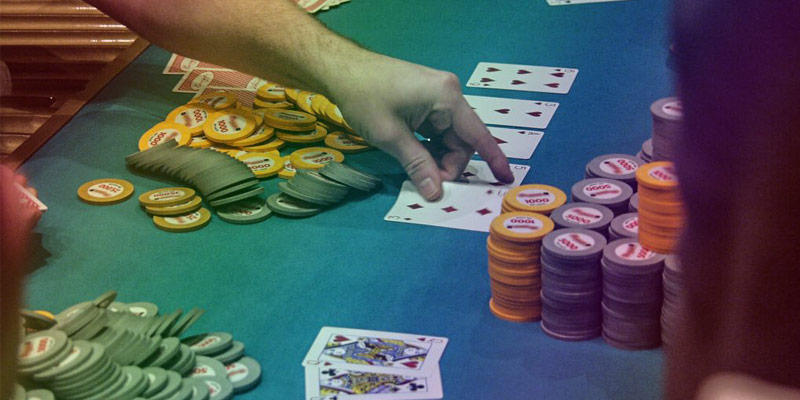
This particular poker variation is perhaps not as well known as some of its “cousins” like Omaha or Texas Hold’em poker. They’re related because they’re similarly played, with some small but crucial differences.
Let’s examine the roots first to see how we got to this variation. The turn called “river” got its moniker because of the fact that the last card could have you “sold down the river.” A most unpleasant thought, whoever the inventor of No-River was must’ve thought. Not that not having that extra round would necessarily save anyone from getting washed ashore, up the creek without a paddle, or washed up! To put it in non-river-inspired terms, you can still lose just as badly and as sorely like in any other poker variation.
No-River is part of the poker games that have community cards, i.e., open-face ones that all the players can benefit from. Some of them might be action cards, meaning they can help multiple players enhance their hands simultaneously. You also get private cards; hence, its similarity in structure to all the other Hold’ems. The number of private or “hole” cards everyone gets is three in total (in the Texas version, players get two private cards).
The regular 52-card deck is used.
How to Start the Game
As mentioned, players are dealt three hole cards with no river card to speak of at first. The player is free to use as many of those original three cards when making his/her five-card hand at the end.
But let’s start from the top.
There are three rounds of betting in total, and you begin by picking the Dealer Button. There isn’t one set dealer; everyone will get to deal at some point, and you start by picking the first person to do it. You then go clockwise from that person when it’s time to deal again. Not only will this ensure that everyone plays the dealer position, everyone will also get to play the early, late, and middle position at some point in the game.
This is also important because of the blinds, which we’ll go into now. Like in most Hold’em variations, they move to the left of the dealer button. There are two of them, the big and the small blind. The 1st person to the left of the dealer button is the small, and the one left of that person is the big blind.
Next, keep in mind that the bets are all “live,” which means anyone can raise, fold, or call at any time.
Once the blinds have acted, the real action can truly begin, starting with the flop.
The Flop and the Four Betting Rounds
So once the forced blind bet has taken place, the 3rd to the left is next to act. This is because the first and second to the left of whoever deals have already put their blinds into the pot. The big blind is then allowed to raise the pot if they so wish. You can’t stay in the game unless everyone meets the required amount; those that can’t, fold.
Players may raise as many times as they feel like it (because of a lucky hand or a confident bluff). The only limitation is that you have to meet the previous amount raised, however much it was in that round. Players may go “all-in” if they want at any time.
When the first round is done, and everyone’s cast their bet, the dealer button person deals three community cards. These are dealt face-up.
After the first player left of the big blind has started the action, everyone else checks, or raises, or folds.
The 2nd, 3rd, and final 4th round follow the same line of action.
The Showdown
When the rounds of betting are done, it will be time for a show of hands or the showdown. Unless everyone else has folded because someone’s “coffee housing” worked of course.
Whoever has the best combination of poker hands totaling five cards will have won. The best would be the royal flush, straight flush, four of a kind, naturally, a full house, and so on. The classic, standard poker card-ranking is implemented here. The participants can combine all or some of their private cards with whatever the community cards have on offer that suits them best. In the case of a tie, the two or multiple winners split the pot amongst themselves evenly.
No-River Hold’em Strategies
Because each player is holding their own “river” card in a way among their private (hole) cards, it’s an exciting game until the end.
You want to charge forward if your private cards are high-ranking and work well together. This means they’re Jacks, Queens, Kings, or they’re all in the same suit. Another reason to keep playing is when you have good connector cards because this ups the chance of winning. If you have low cards, or they’re so random that you’d need a miracle to make them work, we suggest you fold.
Compare your odds of drawing a hand to not drawing it, and if it makes sense to keep going, then bet boldly and may the odds be in your favor!
